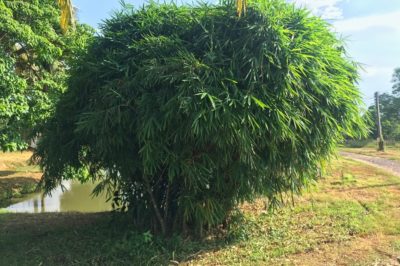Where to Grow Bamboo
Although bamboo is considered a tropical plant, it also does well in temperature areas. Depending on the variety, you can find a bamboo for USDA Zones 5 and above. Although it is not really drought tolerant, it will grow in desert areas if kept watered. In your garden, you should be careful when planting it against adjacent property as it spreads quickly.
Uses for Bamboo Outdoors
Since bamboo comprises such a large group of plants, it has many landscaping possibilities. Among these:
- Smaller bamboos like the pygmy bamboo make good ground covers.
- Many mid-sized bamboos are used to screen unattractive views or structures.
- Bamboo can be shaped like bonsai or used as specimen plants.
- Taller bamboos can provide shade.
Running vs. Clumping Bamboo
Nearly all bamboos are either running or clumping types. The former spreads by stolons and bamboos in this group are most likely to become invasive. However, if you need fast growth, running bamboos will supply it. Clumping bamboos spread much more slowly and need less work to keep the plants under control. Both offer diversity within the group.
Growing Bamboo
Bamboo are not particular about soil texture as long as it drains well; they dislike wet feet. However, they appreciate a slightly acidic soil. If you are growing running bamboo, plan ahead of time to control it with a wall, trench or barrier of some sort. Smaller bamboos made need shade protection as they grow under taller trees; other bamboos do well in full sun.
Fertilizer for Bamboos
Bamboo is a grass, and like grass, it responds well to high-nitrogen fertilizer. In the case of running bamboos, that can be a problem. It’s better to use organic compost or similar soil additives, which will provide nutrients without encouraging excessive growth. If you do need to fertilize, use an organic fertilizer with an NPK ration of 4-3-2 and apply it in the spring.
Maintenance of Bamboo
If you choose running bamboo, you must root prune on a regular basis to keep it under control. This is especially true with mature plants, which can throw up new culms at an astonishing rate. In addition, most bamboos benefit from pruning culms and removing dead or broken branches. Don’t prune fronds, as they won’t grow back.
